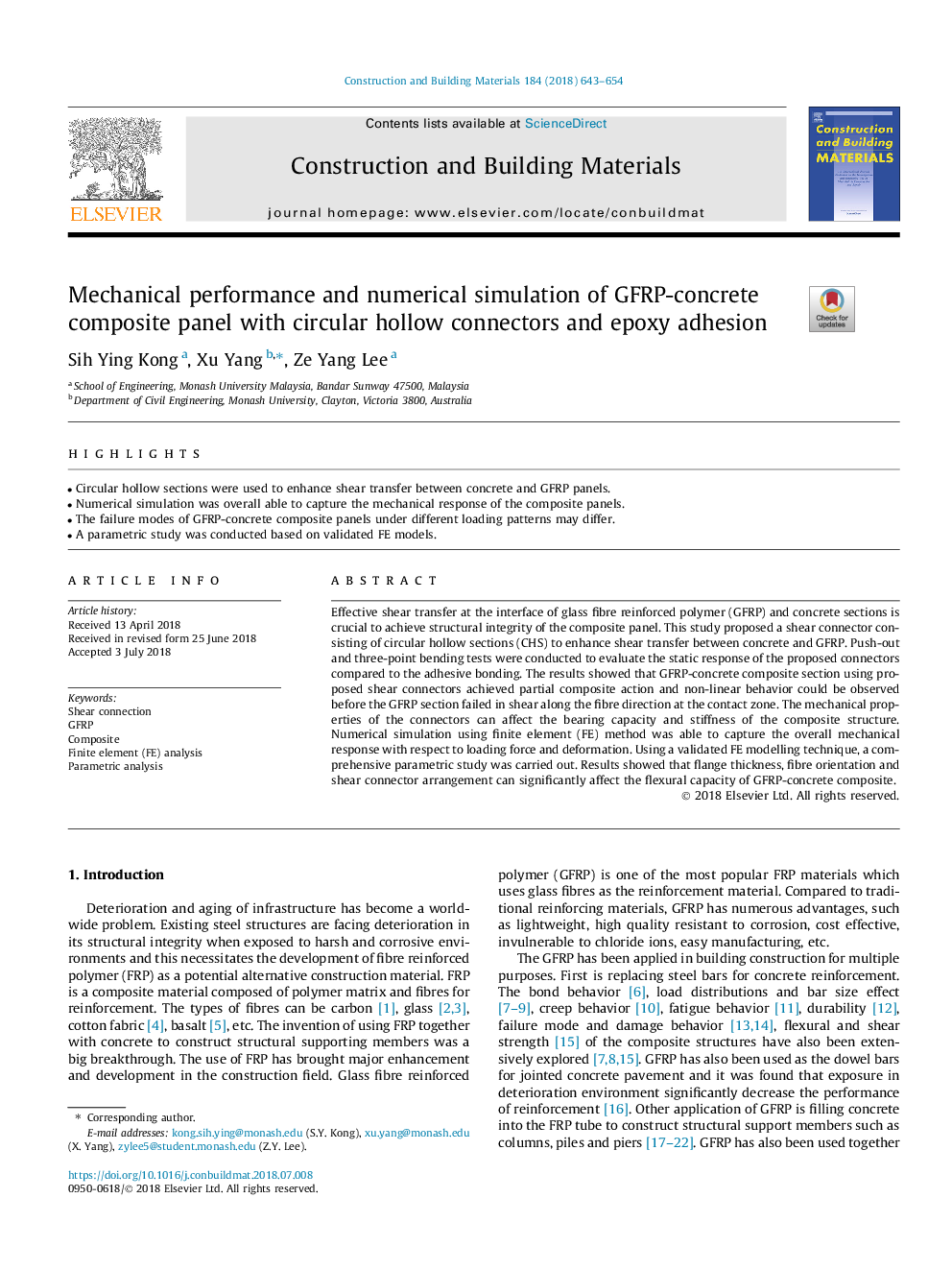| Article ID | Journal | Published Year | Pages | File Type |
|---|---|---|---|---|
| 6712224 | Construction and Building Materials | 2018 | 12 Pages |
Abstract
Effective shear transfer at the interface of glass fibre reinforced polymer (GFRP) and concrete sections is crucial to achieve structural integrity of the composite panel. This study proposed a shear connector consisting of circular hollow sections (CHS) to enhance shear transfer between concrete and GFRP. Push-out and three-point bending tests were conducted to evaluate the static response of the proposed connectors compared to the adhesive bonding. The results showed that GFRP-concrete composite section using proposed shear connectors achieved partial composite action and non-linear behavior could be observed before the GFRP section failed in shear along the fibre direction at the contact zone. The mechanical properties of the connectors can affect the bearing capacity and stiffness of the composite structure. Numerical simulation using finite element (FE) method was able to capture the overall mechanical response with respect to loading force and deformation. Using a validated FE modelling technique, a comprehensive parametric study was carried out. Results showed that flange thickness, fibre orientation and shear connector arrangement can significantly affect the flexural capacity of GFRP-concrete composite.
Related Topics
Physical Sciences and Engineering
Engineering
Civil and Structural Engineering
Authors
Sih Ying Kong, Xu Yang, Ze Yang Lee,
